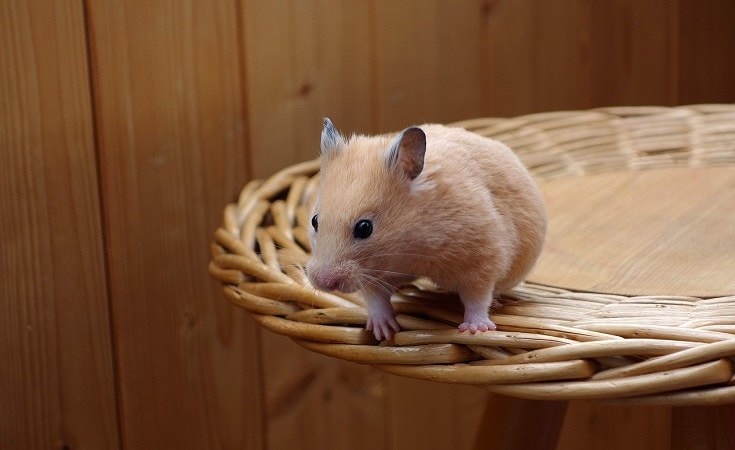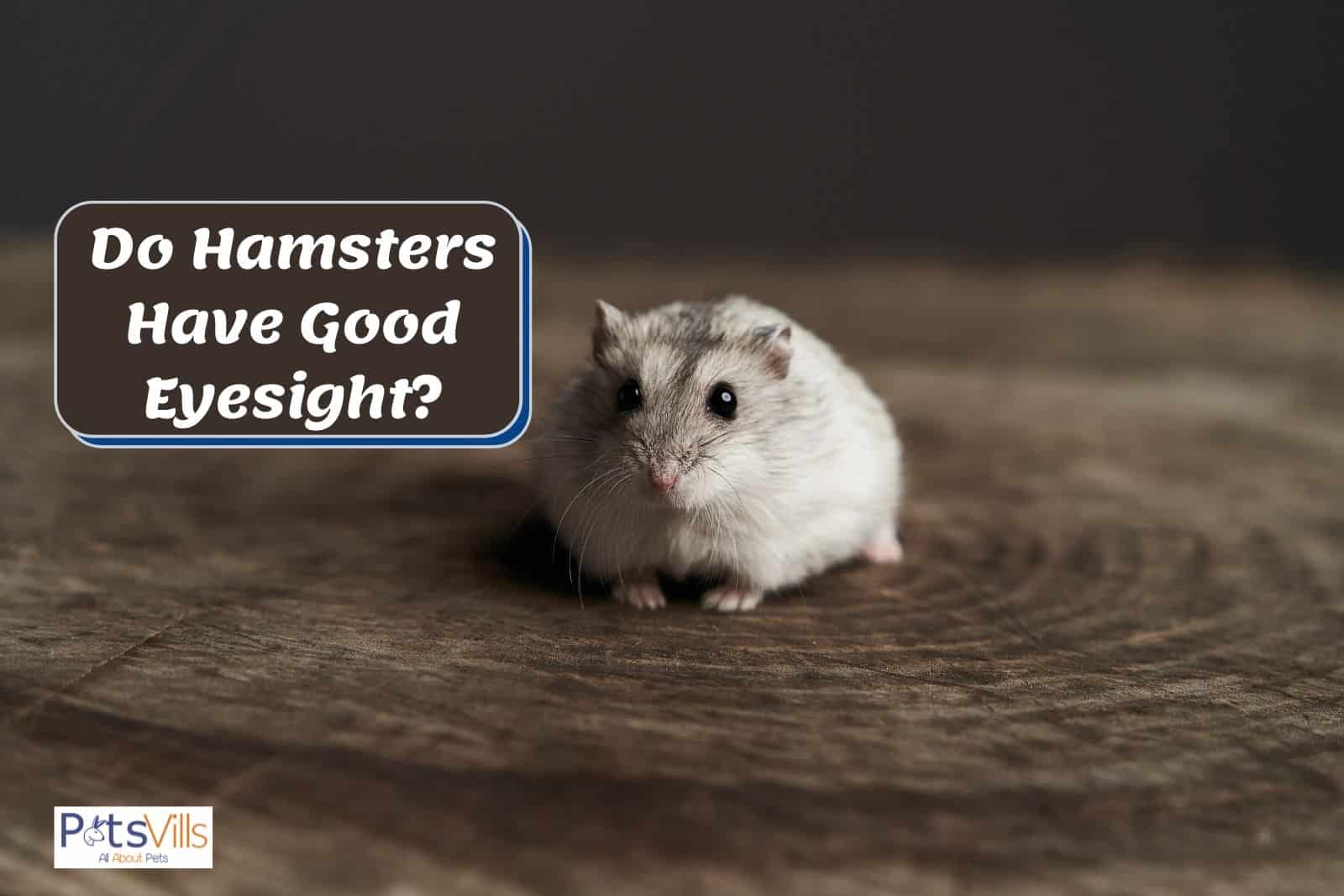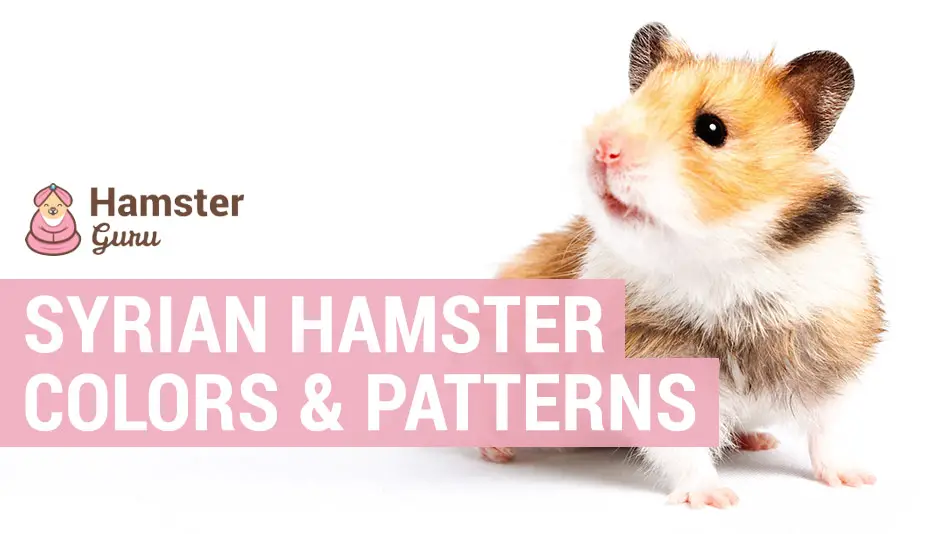Do you own a hamster or are you considering getting one as a pet? It’s important to know about the various markings and patterns that hamsters can have. This guide will help you identify the most common markings so you can better understand and appreciate your furry little friend.

1. Fur color variations
Hamsters come in a wide range of fur colors, which can vary even within the same breed. Some common fur color variations include black, golden, white, cinnamon, and tortoiseshell. Additionally, hamsters can have unique markings like stripes, spots, and blazes of white on their faces. These markings can be found on hamsters of all sizes and body shapes, which can also vary within a breed. Eye color and coat texture are other factors that can impact a hamster’s appearance. Overall, the variety of fur color variations and markings makes each hamster unique and gives pet owners the opportunity to choose a hamster that suits their preferences.

2. Eye color differences
Moving on to eye color differences, hamsters have a wide range of eye colors, including black, red, and ruby. Some specific fur colors like blonde, cinnamon, lilac, honey, and fawn often come with red eyes. The Syrian hamster has the greatest variety in colors, whereas Campbell hamsters have fewer color options. However, regardless of the color type or breed, hamsters with red or ruby eyes are common. It is also interesting to note that some hamsters can have one ruby eye and one red eye. Along with fur color, eye color is an important identification marker for hamsters.

3. Striped or spotted patterns
When it comes to hamster markings, stripes and spots are both common patterns to look out for. Certain breeds, like the Syrian hamster, can have a variety of colors and markings on their fur. In addition to these patterns, eye color and unique facial markings can also vary between individuals. Size and body shape can also play a role in differentiating hamsters, as well as tail length and texture of fur. Hearing and smell identification markings and paw and nail color can also differ between hamster breeds. Overall, hamsters are unique and beautiful creatures with a wide range of physical traits and markings to admire.

4. Unique facial markings
Unique facial markings are another aspect to consider when choosing a hamster. Dom spots often have a distinctive white blaze running down the middle of their faces, while Goldens typically have black cheek markings. In addition to these patterns, hamsters can have a range of unique facial markings such as spots, stripes or patches of different colors. These markings can add to the hamster’s distinct appearance and make them more recognizable to their owners. It’s important to note that specific breeds may have their own set of unique facial markings, so it’s worth doing some research before choosing a hamster. Overall, the facial markings of a hamster are just another feature that makes them a fascinating and unique pet.

5. Different sizes and body shapes
When it comes to hamsters, there are a variety of sizes and body shapes to choose from. Syrian hamsters, also known as golden hamsters, are the most common and can reach up to 6 inches in length. Dwarf hamsters, on the other hand, are much smaller and can range from 2 to 4 inches in length, depending on the breed. Chinese dwarf hamsters have a longer, slimmer body shape, while Roborovski dwarf hamsters are the smallest and have a rounder body. Along with size, body shape can also vary, with some hamsters having a more compact build while others have a leaner frame. Overall, it’s important to consider both size and body shape when choosing the right type of hamster for you.

6. Tail length and shape
The tail length and shape of hamsters make them easily identifiable. As mentioned earlier, the tail of a Syrian hamster is only half an inch long, almost hidden beneath their fur. Meanwhile, a Djungarian hamster has a short tail, around 1 cm in length. However, the tail’s length is not the only distinguishing feature. Some hamsters have a curly or kinked tail, while others have a straight one. It is one of the key features that differentiate hamster breeds. With so many varieties of hamsters, it’s fascinating to notice how their tails vary in shape and length.

7. Hearing and smell identification markings
The sense of smell is very important for hamsters, and it plays a significant role in their behavior. Hamsters use their scent glands to mark their territory and identify individuals. This makes the hearing and smell identification markings a crucial aspect of distinguishing one hamster from another. Through smelling each other’s scent glands, they can detect the sex of the other hamster and their relationship with them. Additionally, their sense of smell helps them navigate their surroundings, especially when their eyesight is not very good. As owners, it is essential to avoid cleaning out their scent markings completely and regularly provide new substrates for them to rub against. By paying attention to hearing and smell identification markings, owners can better understand their hamsters and provide the right care they need to stay comfortable and happy.

8. Coat texture and length differences
When it comes to the coat of a hamster, there are various textures and lengths that can distinguish one from another. Long-haired hamsters are popular due to their fluffy appearance and can make great pets as long as their coat is properly maintained. Meanwhile, short-haired hamsters are often easier to care for and can come in a range of colors and patterns. In addition to the length and texture of the coat, there are also other features that can make a hamster stand out, such as unique facial markings or paw and nail color variations. By understanding these differences, potential hamster owners can choose the perfect pet that meets all their preferences and requirements.

9. Paw and nail color variations
When it comes to hamster paw and nail color variations, there are a few factors to consider. The length of the nails and the state of the footpads can give insight into the hamster’s health and well-being. Along with their hearing and smell identification markings, the color of their paws and nails can also vary. Owners may notice differences in paw and nail color within specific breed markings, as well as coat texture and length. It’s important to note that the presence of scars or blood could indicate previous injuries, such as fights with other hamsters. Syrian hamsters, in particular, have loose skin and may be prone to other illnesses, such as hair loss or mites. As with any pet, it’s crucial to monitor their overall health and seek veterinary care if needed.

10. Specific breed markings
When it comes to specific breed markings, there are several types of hamsters to consider. Syrian hamsters, which are the most common pets and research hamsters, have golden or sandy brown fur with black cheek markings. Meanwhile, agouti hamsters have a lighter undercoat and distinctive markings around their eyes. Roborovski dwarf hamsters are the smallest of the popular breeds and have sandy brown fur with white bellies and markings around their eyes. Additionally, there are various coat color variations and patterns that may be more prevalent in certain hamster breeds. It’s important to note that while markings can help identify a hamster’s breed, they should not be the sole determining factor, as size and other physical characteristics also play a role.
- Diy Delights: Creative Ideas For Hamster Toys And Accessories - April 13, 2024
- Creating A Healthy Habitat: Essential Tips For A Happy Hamster Home - April 13, 2024
- Enrichment Galore: Boosting Your Hamster’s Happiness With Emojis - April 13, 2024